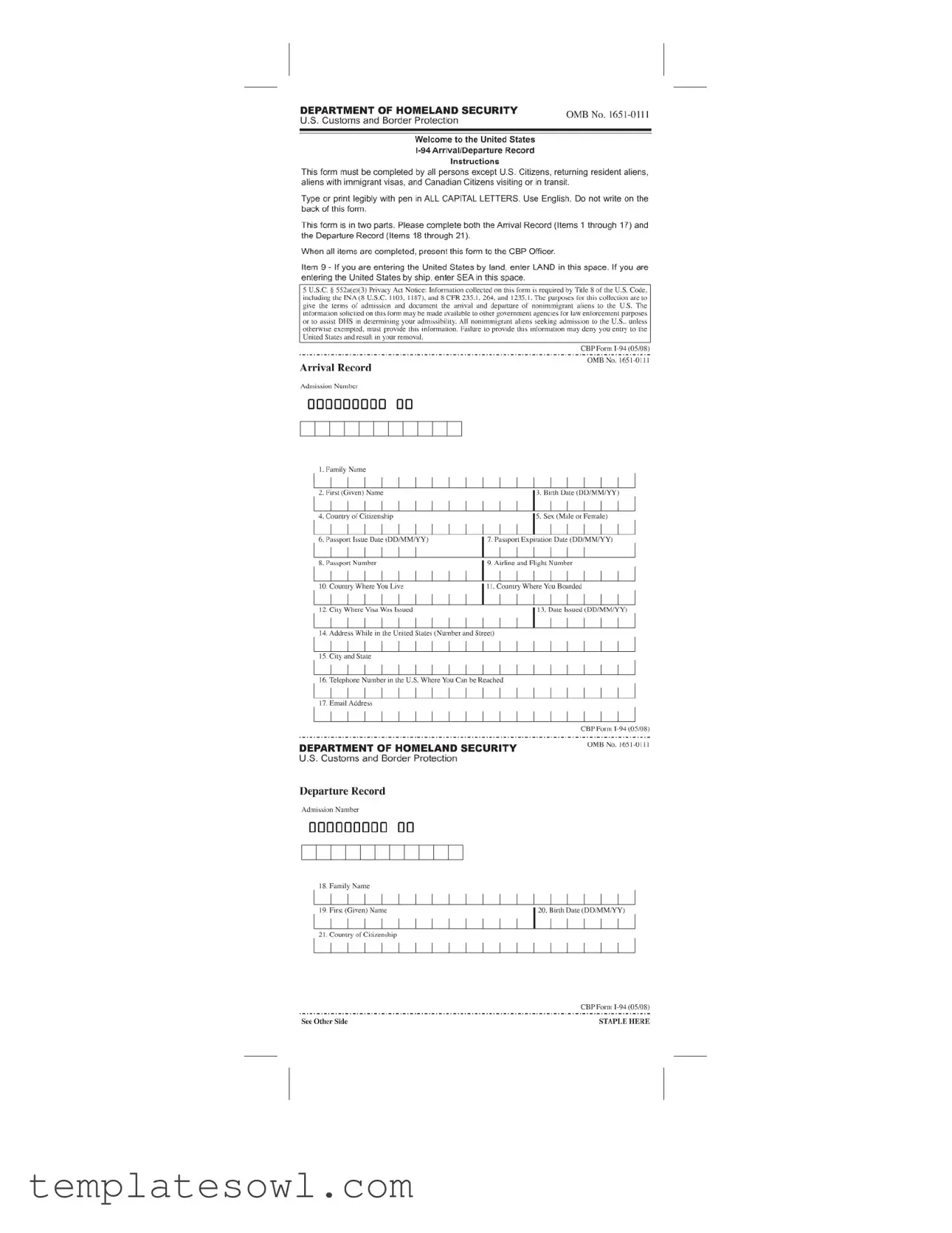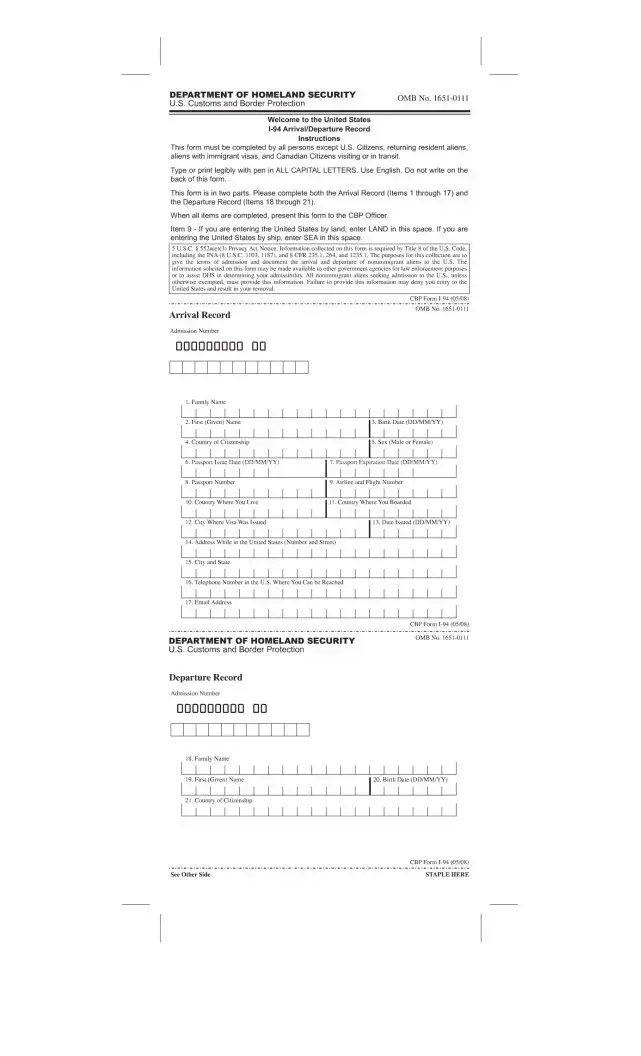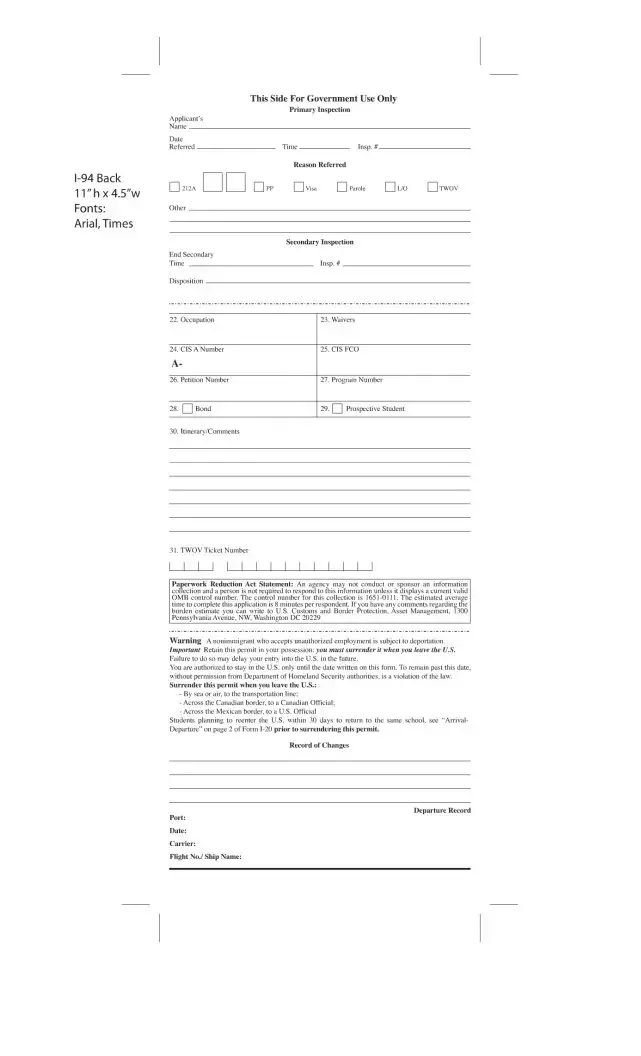What is the CBP I-94 Form?
The CBP I-94 Form, also known as the Arrival/Departure Record, is a crucial document used by U.S. Customs and Border Protection (CBP). It records the arrival and departure of non-U.S. citizens traveling to and from the United States. The form is not required for U.S. citizens, certain returning residents, and Canadian citizens who are either visiting or in transit. Most travelers must fill out both the Arrival Record and the Departure Record sections on the form.
Who must complete the CBP I-94 Form?
All non-U.S. citizens entering the United States are generally required to complete the CBP I-94 Form unless they fall into specific exempt categories. This includes tourists, international students, and temporary workers. Those with immigrant visas and U.S. citizens do not need to fill it out. It’s important to ensure all required information is provided accurately, as failure to do so may result in denial of entry.
How do I fill out the CBP I-94 Form correctly?
To accurately complete the form, you'll need to provide information like your full name, birth date, passport details, and the purpose of your visit. It’s essential to type or print clearly in all capital letters using English. Make sure not to write on the back of the form, and check that all sections are filled out fully—this includes both the Arrival and Departure Records.
What happens if I lose my I-94 Form?
If you lose your I-94 Form while you are still in the United States, it’s crucial to obtain a replacement. You can request a duplicate online through the CBP website, or you may visit a CBP office for assistance. Keeping a copy of this document is vital. You need to present it along with your passport when exiting the country. Without it, you may face delays or complications in future travels.
How long can I stay in the U.S. on the I-94 Form?
The I-94 Form indicates how long you are authorized to stay in the U.S. This is marked on the form and must be adhered to strictly. Overstaying this period without permission from the Department of Homeland Security can lead to serious legal issues, including deportation and difficulties with future entries into the country. Always check the date on your I-94 Form and plan your departure accordingly.
What should I do when I leave the U.S.?
Upon leaving the United States, you must surrender your I-94 Form. This can be done by handing it to the transportation carrier if you're departing by sea or air. If crossing the border into Canada or Mexico, present it to the appropriate official. Retaining the form after your departure can lead to complications on your next trip, so it's essential to follow these procedures carefully.


